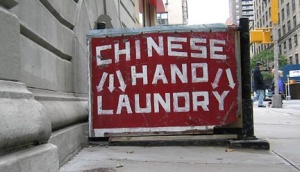The Second Wave
From The Peopling of NYC
The New Immigrants (1965-Present)
The second wave of Chinese immigrantion came after the passage of the Immigration and Nationality Services Act of 1965. Similar to the earlier immigrants who fled from China after World War II, many of these immigrants left because of an unstable government, political chaos, and fear of the Communist regime. They viewed the United States as a land of opportunities that would allow them a chance to experience what they did not have – freedom, rights, and a better life.
The second wave immigrants were termed the “new immigrants” because they differed from the first wave immigrants economically, socially, and culturally. They were generally professional, skilled, and educated people who owned stores or businesses, instead of the farmers and laborers who came during the Gold Rush and built the Central Pacific Railroad. They originated from cities in Mainland China, not rural villages in the Guangdong Province in Southern China. They spoke Mandarin, Cantonese, and their native dialects. The “new immigrants” were typically relatives of immigrants already living in the United States; therefore, instead of single men, families of Chinese immigrants arrived in New York City. In 1960, there were 32,831 Chinese immigrants in New York City; by 1990, there were 238,919. This placed pressure on many immigrants to find employment in order to support not just themselves but their whole family as well.
However, the second wave of immigrants came to the United States with the intention of settling down, unlike the first wave of immigrants who came to find work, send money to their families back home, and then earn enough money to return to China. The “new immigrations” were permanent, not temporary. Therefore, all of their children were born in the United States, creating the Second Generation or American Born Chinese (ABCs).

